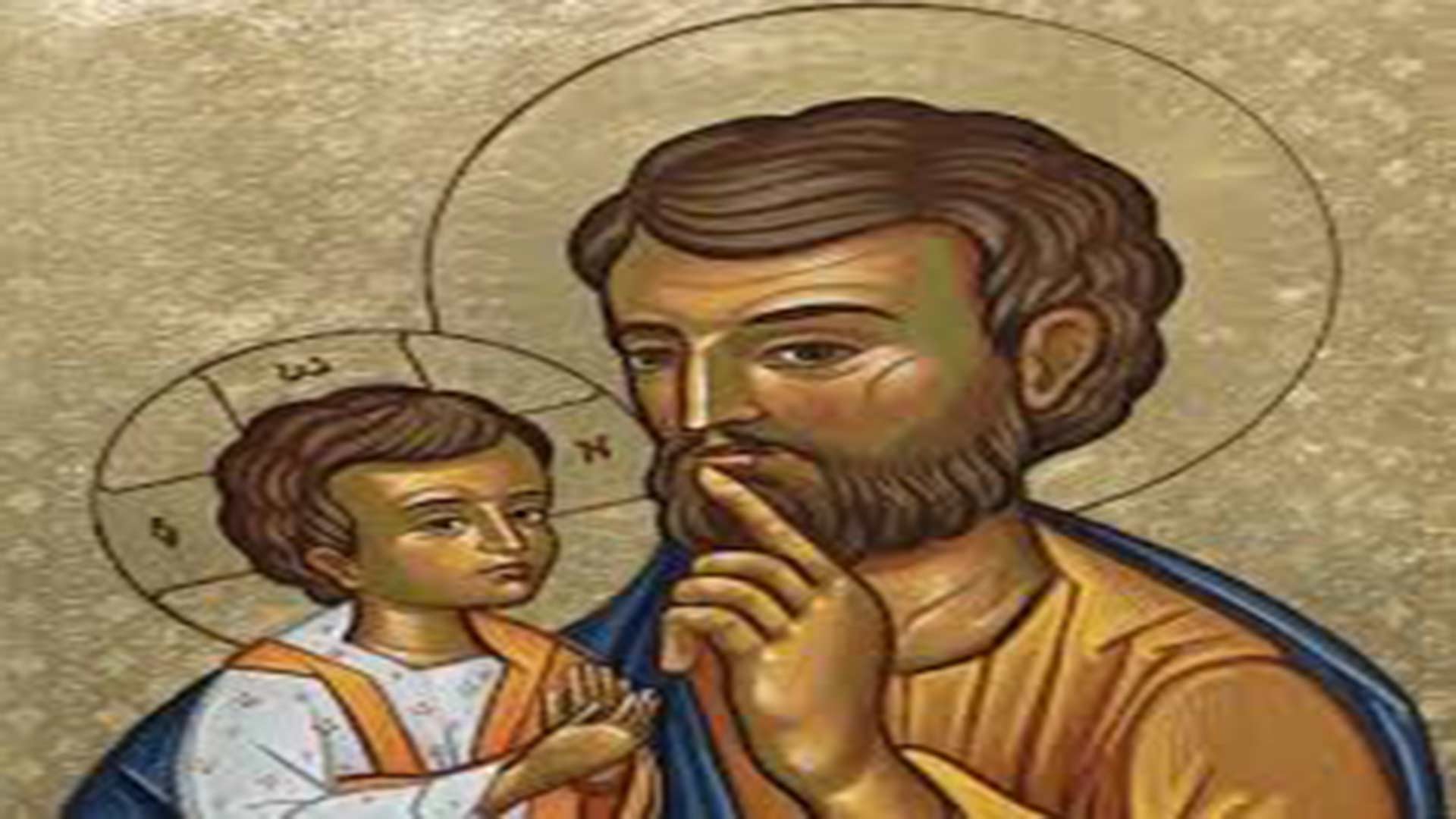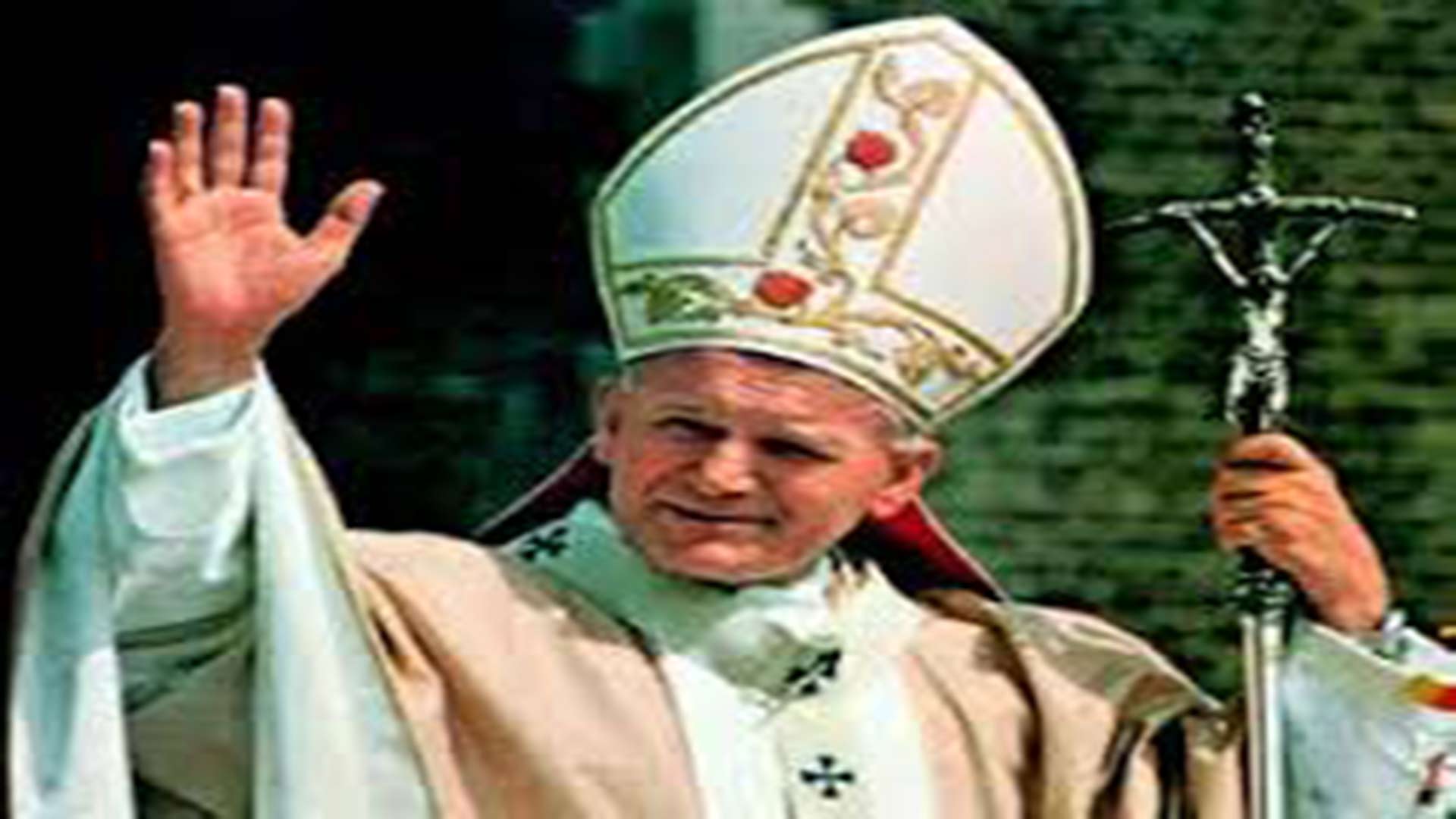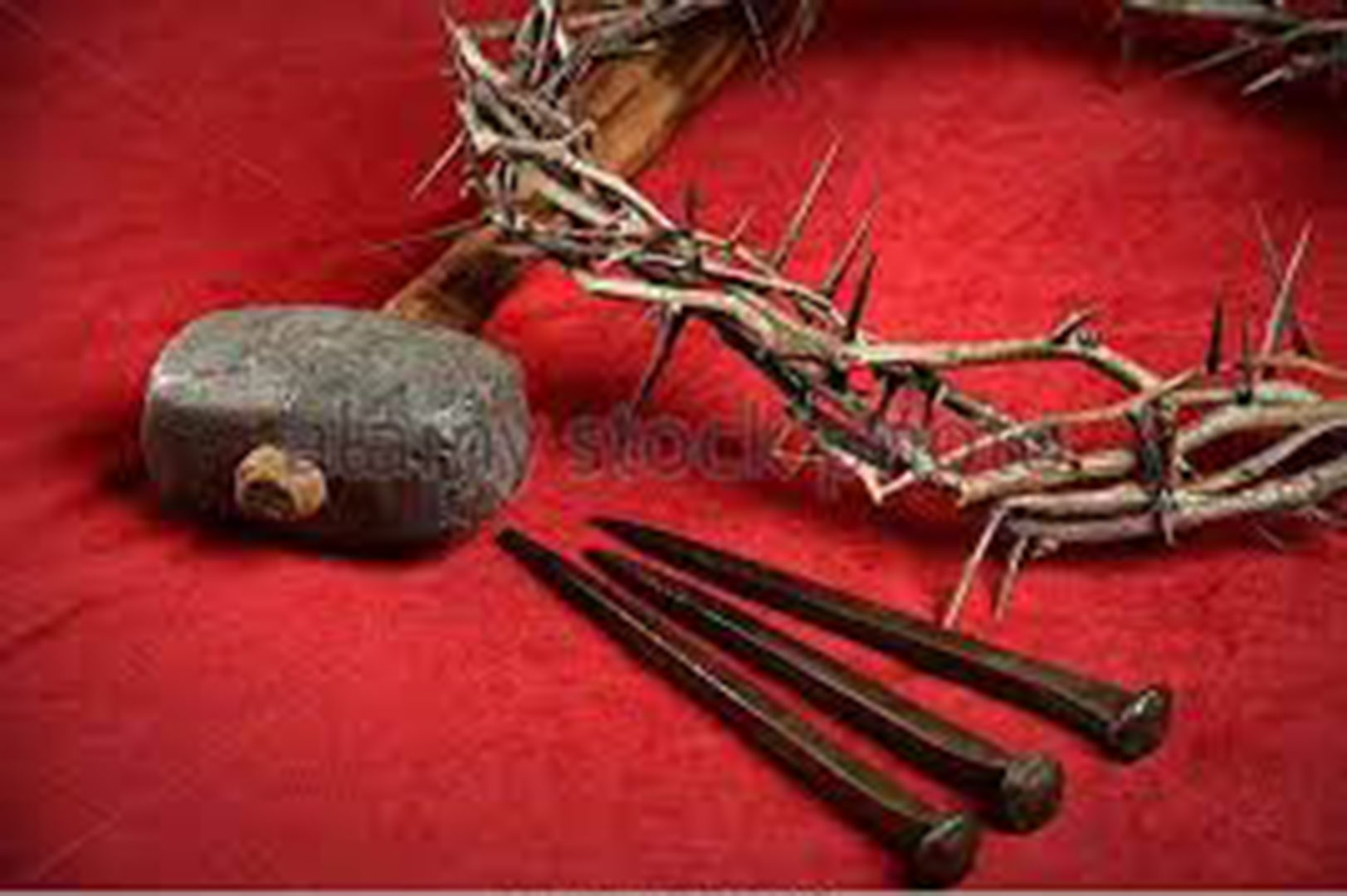St Joseph: unsuspecting, silent, forgotten
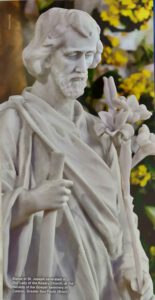
Those three adjectives popped into my head as I spent 1 May pondering the life of the foster father of Jesus. And come to think of it, what do we really know about him? Except for some passages in Matthew and Luke, even the Scriptures have scanty information on his life journey.
Trust and wisdom
Joseph, who was a descendant of the house of King David, exhibited no trappings of royalty. He was only betrothed to Mary, a virgin, when, mysteriously, he found her pregnant. He graciously refrained from condemning her; as “a righteous man and unwilling to expose her to public disgrace” (Mt 1:19), he'd thought of discreetly divorcing her. But this would surely have left the maiden defenceless against a bigoted Jewish society – or so it dawned on him after an angel revealed him God’s magnificent designs. Trusting the divine messenger, he promptly took Mary as his wife. Thus, the role of Joseph who was blessed with expectant faith and total trust would soon prove to be crucial in the history of salvation.
What was Joseph like, as a husband and father, professional and citizen? One thing is for sure – he wasn’t a loudmouth; quietness was his watchword. Soon after Jesus’ birth, he quietly fled with the family to Egypt, escaping carnage of infants at the hands of king Herod of Judea. They returned only after the ruler’s death and settled in Nazareth, far from the glare of the capital city, Jerusalem. He worked as a modest carpenter, and was helped by his divine son. A dutiful citizen that he was, he’d earlier made a trip to his city, Bethlehem, to enrol the couple in the census. Finally, Joseph was a devoted father too; he joined Mary in searching for their son lost in Jerusalem. But then, quite perplexingly, even here we don’t get to hear his voice.
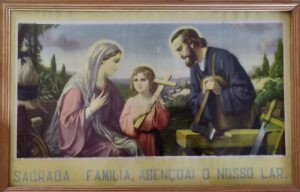
Pope Benedict XVI has stated that Joseph led a “simple and industrious life, cultivating the conjugal relationship with care and fulfilled with enthusiasm the great and difficult educational mission.” (Angelus, St Peter's Square, 19 March 2006) Yet, in modern parlance, we tend to dismiss such a man as lacking l’esprit. So, could it be that Joseph’s portrayal as an old and unattractive man induced the silence that we’ve weaved around him down the centuries? Some believe that his elderly mien is meant to account for his wisdom fit for the father of Jesus. And hopefully, showing him as past his prime would help explain how he abstained from conjugal relations with a young and pretty wife.
While the Pope Emeritus makes ample references to how Joseph treated Mary with love and care, Fulton Sheen, portrays the Saint more dramatically, in The World’s First Love. He profiles him as “probably a young man, strong, virile, athletic, handsome, chaste, and disciplined, the kind of man one sees… working at a carpenter’s bench.” Although society then was probably less conscious of physical attributes than we are today, those are some that would rightly distinguish the holy family of Nazareth. And practically speaking, how else would a man provide for a family of three?
The insightful Archbishop has a take on Joseph’s libido as well: “Instead of being a man incapable of loving, he must have been on fire with love.” But, then, as a counterpoint he sheds light on how “young girls in those days, like Mary, took vows to love God uniquely, and so did young men, of whom Joseph was one so preeminent as to be called the ‘just’. Instead, then, of being dried fruit to be served on the table of the King, he was rather a blossom filled with promise and power. He was not in the evening of life, but in its morning, bubbling over with energy, strength, and controlled passion.”
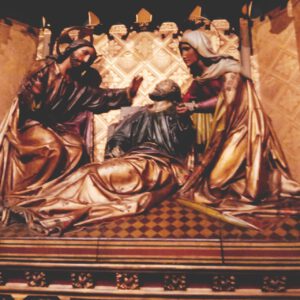
That’s how Joseph must have lived the elevated life that God had called him for. The circumstances of his death are unknown, but it is surmised that he died before Jesus’ public life began, if not, certainly before the Crucifixion (Jn 19: 26-27). We could reason out that God thus saved him the anxiety of seeing Jesus vilified in his public ministry: really, how would a father – an honourable man – take it lying down? It might have well compelled him to come out into the open and defend his son. But if this conjecture be false, God for sure saved him from the cruelty of witnessing the humiliating death of his Son on the Cross.
Honouring Joseph
Be that as it may, Joseph was an unsuspecting man, for he trusted in the Lord; he was silent, as he knew how to take it all in his stride. So now the moot question is: why do we forget him so very easily?
Curiously, veneration of Joseph began in his land of self-exile, Egypt, and the same took about thirteen centuries to take root in the West. This finally happened when the Servites, an order of mendicant friars, began to observe his feast on 19 March, the traditional day of his death.
Later promoters of the devotion included Pope Sixtus IV, who introduced the feast circa 1479, and the celebrated sixteenth-century mystic St Teresa of Avila, who attributed her miraculous cure of paralysis to him. After Mexico, Canada, and Belgium declared Joseph their patron, Pope Pius IX in 1870 declared him patron of the Universal Church. In 1955, Pope Pius XII established the Feast of St Joseph the Worker on 1 May as a counter-celebration to the communist-sponsored May Day.
A feast day, however, should rise above tokenism. We must therefore have recourse to this admirable saint – emblematic of the world's forgotten fathers – in the ups-and-downs of our daily life. No artist or writer has captured the essence of the man as beautifully as the litany in his honour has: “St. Joseph – chaste guardian of the Virgin, foster father of the Son of God, diligent protector of Christ, head of the Holy Family, most just, most chaste, most prudent, most strong, most obedient, most faithful.”

Closer to our times, Pope Benedict XVI highlighted a much neglected aspect of Joseph’s life – chastity – by introducing the reference in the Eucharistic prayer, after Mary: “St Joseph, her Most Chaste Spouse”. (Why many celebrants avoid the operative word is anybody’s guess) The Pope revealed that his predecessor, John Paul II, who was devoted to St Joseph, and dedicated to him the Apostolic Exhortation Redemptoris Custos (Guardian of the Redeemer), experienced his assistance at the hour of death.
In an era when fatherhood is relegated to the background even in birth certificates; masculinity is equated with machismo; and chastity disdained in the age of the sexual revolution, we are invited to emulate the counterexample of St Joseph.
In particular, on 1 May, let us make Pope Pius X’s Prayer to the Model of Workers our own, so that our labour and toil may draw abundant fruit in this valley of tears, particularly given the rapid and complex changes due to happen in the covid and post-covid eras.
(To the memory of my parents Fernando de Noronha and Judite da Veiga, on their 56th wedding anniversary)
Credits:
Pic 1 - Statue at Our Lady of the Rosary Church, Heralds of the Gospel Seminary, Caeiras, Greater São Paulo, Brazil. Taken from the magazine of the Heralds of the Gospel (Vol. V, No. 43, May 2011)
Pic 2 - Frame that my parents made it a point to gift to each of their five sons at their marriage.
Pic 3 - Death of St Joseph: panel of the Church of Our Lady (Onze Lieve Vrouwekerk, Amsterdam). Information provided by my friend Caetano Filipe Colaço (Margão/Dona Paula)
Pic 4 - Prayer to St Joseph, Model of Workers, composed by St Pius X. Source: magazine of the Heralds of the Gospel (as above)
(Also published in The Examiner, December 2021)
Divine Spokesman
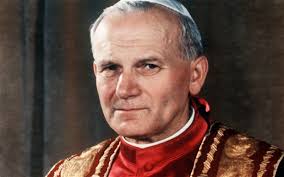
The Pope is, by God’s design, a man for his times. As regards Karol Józef Wojtyla, after the initial public scepticism, it became clear that his every facet was a response to the world order of the last quarter of the twentieth century.
We can say without risk of mythologizing that KJW’s personal history matched up with the convulsive era in which he lived. Thanks to his profound faith and compassion, he identified the early loss of his close family[1] with his country’s troubled history. His sense of humour and sportsmanship helped him transform his hard labour under the Nazi regime into empathy for the human condition. His training for the priesthood in the underground seminary of Krakow endowed him with nerves of steel to eventually outwit a repressive political regime. His doctorate on St John of the Cross smoothed out his natural propensity for the ‘via negativa’; his second, on Scheler’s phenomenology, was an exploration into enhancing Christian ethics. By his longtime interest in theatre, he looked at the world as a stage, and later, his university teaching and successive appointments as bishop, archbishop and cardinal[2] gave him a vantage point on global affairs.
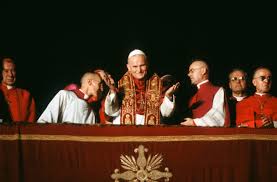
Probably it never occurred to KJW that one day he would be a key player on the world stage. His rise as ‘John Paul II’ in 1978 was indeed sensational: The first ever Pope of Slavic extraction and a non-Italian in 455 years brought palpable hope to far-flung Christendom while his unusually young age was a promise of long innings.[3] His intellectual baggage and experiential knowledge was set to make of his pontificate an ideological and political turning point, marked by healthy opposition, essential restoration and measured innovation.
His main opposition was to atheistic communism. As a passionate Marian (more intensely so after his miraculous escape from assassination attempts)[4] he simply pitted Mary against the Monster, becoming at once a challenge to the Soviet leadership and a beacon of hope to Eastern Europe. He endorsed the simmering anti-communist revolution; it was an initiative that won worldwide support, and amazingly, even from Russia. In Gorbachev’s words, “Everything that happened in these years in Eastern Europe would have been impossible without the presence of this Pope.”
These successes won Pope John Paul II great acclaim as a world statesman but he was essentially the bishop of Rome and the ‘universal pastor of the Church’, a new title that he assumed at the inauguration of his ministry. While he wielded politics and diplomacy with élan he remained at heart a man of intense prayer; he was the mystic behind the Iron Curtain, ensuring that the ‘dark night of the soul’ would steadily make way for the ‘ascent of Mount Carmel’. After dismantling totalitarianism in the East he denounced the liberal-capitalism of the West, proposing a renewal of Christian civilization as a whole. Hence his encyclicals speak as much about material realities[5] as they extol eternal mysteries[6]. All his interventions had a great liberating force; but perceiving the dark side of freedom at work inside the Catholic Church he also set about disciplined extremist theologians[7] and eventually restored Vatican to its preeminent position of moral and spiritual leadership.
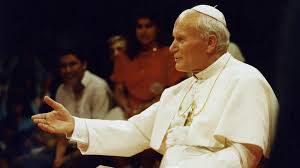
Pope John Paul II became one of the most charismatic and influential leaders in our multi-cultural century. One of the most-travelled world leaders in history, the Pope-mobile and the kissing of the ground in the land he set foot on became two touching features of his pastoral journeys.[8] Over the years at the Vatican, he welcomed a great number of world dignitaries, and the most unlikely ones at that.[9] A brilliant linguist, and blessed with an uncommon sensitivity to the human person, he made Christ known urbi et orbi, formulating the thinking of the Catholic Church in a modern lingo, without compromising on principles.[10] No doubt he often received bouquets and brickbats either from progressives[11] or from conservatives and traditionalists[12]; but he treated them all with the same solicitude.
Pope John Paul II himself was perhaps a curious mix: by and large a conservative in faith and morals and a progressive in social and economic issues. He was a bold and innovative thinker[13] and, unlike most predecessors, who were reticent, he was also a prolific speaker and writer. His book Crossing the Threshold of Hope (1994) addressing major theological concerns of today became an international bestseller and further established him as a great intellect and teacher of our times. This divine spokesman had the ability to reach out to the flock, especially the youth and families. Perfectly at home with the modern media of communication, Time magazine named him the Man of the Year in 1994, while the people considered him the ‘Pope of the Century’ or even the ‘Pope of Popes’.
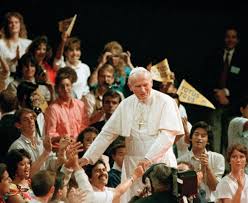
Pope John Paul II died a century upon the preliminary rumblings of communism, his bête-noire, and eve of the vigil of the Feast of Divine Mercy,[14] a prominent theme of his pontificate. Six years later, his beatification overshadowed communist-sponsored May Day,[15] vindicating his earthly mission; it also coincided with the said Feast whose great Promoter he had canonized. One can read in this divine esteem for the continual efforts that the Pope had made to spiritualize the world with the cult of saints and the message of mercy, peace and love. Significantly, the forgiveness that Pope John Paul II sought in the year 2000, for arguable ‘wrongdoings’ of the historical Church,[16] symbolized an earnest desire to enter the third millennium with a clean slate.[17]
Today, there is no longer room for scepticism; it is clear that God had designed that KJW with his unique background should be Pope, and that, in a globe fragmented by religious and political stances, he should speak in diverse yet not contradictory voices; when faced by hatred and strife, be unequivocal yet mellifluous; and, challenged by a humanity fast losing its religious sense, clinical in his assessment yet warm in his approach.
Endnotes
[1] He lost his mother at 8, his only brother at 11, and his father at 21 years of age.
[2] As a key figure at the II Vatican Council he became much better known internationally.
[3] Pope John Paul II (18/05/1920–02/04/2005) reigned as the 264th Pope from 16/10/1978- 02/04/2005. His was the second-longest pontificate after Pius IX's 31-year reign.
[4] On 13/05/1981, Pope John Paul II was shot at in St. Peter's Square by a Turkish gunman in the employ of the Bulgarian communist government. He recovered, resumed his work, and forgave his would-be assassin. In 1982, there was a second attempt, at Fatima, just a day before the anniversary of the first. In 1984, he consecrated the world (and not Russia, as per the Message of Fatima) to Mary. Also see his encyclical Redemptoris Mater (Mother of the Redeemer), 1987.
[5] Laborem Exercens (On Human Work), 1981; Sollicitudo Rei Socialis (On Social Concerns), 1987; Centesimus Annus (On the 100th anniversary of Rerum Novarum), 1991
[6] Redemptor Hominis (The Redeemer of Man), 1979; Dives in Misericordia (Rich in Mercy), 1980; Dominum et Vivificantem (The Lord and Giver of Life), 1986; Redemptoris Missio (The Mission of Christ the Redeemer), 1990; Veritatis Splendor (The Splendour of the Truth), 1993; Evangelium Vitae (The Gospel of Life), 1995; Fides et Ratio (Faith and Reason), 1998; Ecclesia de Eucharistia (On the Eucharist in its Relationship to the Church) 2003;
[7] Hans Kung (Switzerland), Edward Schillebeeckx (Belgium), Tissa Balasuriya (India), Leonardo Boff (Brazil), Gyorgi Bulanyi (Hungary), Jacques Pohier (France), C. E. Curran (USA), Bernhard Haring (Germany), Gustavo Gutierrez (Peru), among others, were banned for their unacceptable views on subjects ranging from papal infallibility and liberation theology to contraception. Similarly, discouraging priests and nuns from direct or full-time political activities, he ordered the American Jesuit Fr Robert Drinan to resign his office as congressman. He also excommunicated Archbishop Marcel Lefebvre for his acts of insubordination.
[8] The “Pilgrim Pope” made 104 foreign trips to 129 countries, more than all previous popes combined. He logged more than 1,167,000 km. He consistently attracted large crowds on his travels, some amongst the largest ever assembled in human history. While some of his trips (such as to the USA and the Holy Land) were to places previously visited by Pope Paul VI (the first Pope to travel widely), many others were to places that no Pope had ever previously visited.
[9] Political leaders like Mikhail Gorbachev and Yasser Arafat, among many others; and religious leaders of Christian denominations and other religions.
[10] Besides fourteen encyclicals, Pope John Paul II has to his credit several apostolic letters, exhortations, and books. Mention must be made of two significant publications under his tutelage: the Code of Canon Law (1983) and the Catechism of the Catholic Church (1997).
[11] They were critical of the Pope’s stance on artificial contraception, abortion, euthanasia, pedophilia, homosexuality and the ordination of women.
[12] They were critical of the Pope’s support to the II Vatican Council and its liturgical reforms as well as of his ecumenical efforts and inter-religious dialogue, whose supreme example was the meeting of world religious heads, which Pope John Paul II organized in Assisi in 1983. They also accused him of promoting Modernism, condemned as the “synthesis of all errors” by Pope Pius X.
[13] For instance, in Love and Responsibility (1960), which perhaps became a basis for Pope Paul VI’s Humanae Vitae, KJW dismisses the “utilitarian” view of sex for pleasure and the “rigorist” idea of sex for procreation. Instead, he sketched out a high doctrine of sexual intercourse as mutual self-donation. In his Theology of the Body (2006) Pope John Paul II broke new ground, inaugurating what many regard as a revolutionary shift in Catholic doctrine and sensibility.
[14] Pope John Paul II instituted this feast when he canonized Sr. Faustina Kowalska in the year 2000. It is now celebrated on the Sunday after Easter.
[15] Labour parades were cancelled in Poland in view of the Beatification.
[16] As the world crossed into the third millennium, Pope John Paul II magnanimously apologized to Jews; Galileo; Muslims killed by the Crusaders; victims of the Inquisition, and almost everyone who may have considered themselves victims of history. He also included the involvement of Catholics in the African slave trade; denigration of women; the burnings at the stake, and the indifference of many Catholics during the Holocaust.
[17] See the Apostolic Letter Tertio Millenio Adveniente, in preparation for the Jubilee Year 2000.
(Renovação, Vol. XL No. 9-10, 1-31 May 2011)
The Nails of the Crucifixion
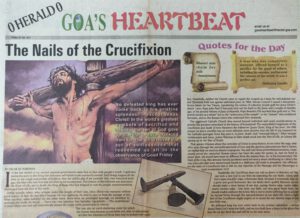
In the last month or so, several national governments came face to face with people’s wrath. Legitimate monarchs were in the firing line and some self-styled royals summarily ousted. Such things happen all the time in the rough-and-tumble of politics and are child’s play if we consider that, two thousand years ago, the Man who was God was crucified by his countrymen: The Creator of the Universe was destroyed, the Giver of Life put to death, the King of Kings who had deigned to visit his people, unceremoniously eliminated from the face of the earth.
Unlike worldly rulers, who collapse under the weight of their sins, Jesus Christ was executed without good reason. In fact, He was killed because He was righteous; He died to save us from the scourge of sin! What abnegation, what nobility! On the other hand, there were no prolonged hearings, no intention to ascertain the truth, no mercy…. There was only injustice, lies, brutality, ingratitude…. The annihilation of Jesus Christ was and will undoubtedly remain the worst crime perpetrated in history.
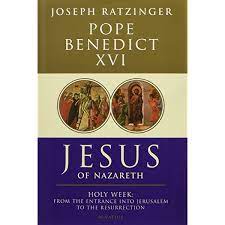
This was also an earth-shattering event for which the Chosen Race became accountable – alas, an irreversible act that the followers of Christ have had to painfully endure ever since. It caused them to have a mental block against the Jewish people; thankfully, neither the Church came to regard the Gospels as a basis for anti-Judaism nor did Christians hold out against individual Jews. Yet, the head of the World Jewish Congress, Ronald Lauder, recently accused the Christians of being silent spectators to the persecution of Jews.
Be that as it may, whether or not it was for the Jews to apologize to the Christians can be debated till the end of times. Without going into the long story of that failed relationship, it may be recalled that Pope Pius XII made efforts to mitigate the fall-out of what Churchill dubbed “a monstrous tyranny, never surpassed in the dark and lamentable catalogue of human crime.” In 1964, Vatican Council II issued a document, Nostra Aetate (‘In Our Times’), repudiating the notion of collective Jewish guilt for Jesus Christ’s death. Later, Pope John Paul II famously held out his hand to the Jews; and a couple of months ago, in his second volume of Jesus of Nazareth, Pope Benedict XVI ascribed that guilt not to “the Jewish people as a whole” but to the “aristocracy of the temple”, to the “masses” who acclaimed Barrabas, and to the Roman rulers who endorsed their demands.
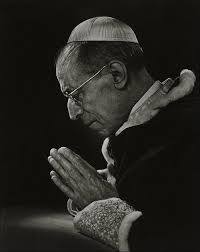
The aggrieved Catholic Church thus moved beyond individual and racial considerations to ponder the greatest watershed in the history of humankind! The unparalleled magnitude of the crucifixion and death of Iesvs Nazarenvs Rex Ivdaeorvm (‘Jesus Christ, King of the Jews’, the INRI plaque on every crucifix) was an event infinitely more decisive than the fall of any emperor! As the Catholic apologist Steve Ray puts it, in Jesus’ death God “rewound history”: Eden became Gethsemani and Satan, Judas! Whereas at Eden death stuck into the Tree of Life, at Calvary life sprang up at the Tree of Death.
That speaks volumes about the centrality of Christ in meta-history. As we relive His saga, year after year, through the sorrowful spectacle of Lent and the glorious phenomenon that is Easter, we realize that we need no scapegoats. As members of the human race, you and I are those proverbial Jews and Romans, transposed across the centuries! Human nature has been the same for aeons; so, had we lived in Jesus’ time, maybe we would have been no different from those Jews and Romans! The Jew in us stands out even today, when we distort His teachings; and the Roman in us, when we hail the distortion. Our offences are the nails of modern-day Crucifixion; our rejection of the Message and the Messenger, an eloquent re-enactment of it!

We can turn a new leaf in our lives by repenting for our faults. Adam and Eve’s lapse was called felix culpa, a fortunate fault, because it eventually won us a great and good Redeemer. But our faults don’t qualify likewise; so we should first make a clean breast of our sins, saying: Nostra culpa, nostra culpa, nostra maxima culpa – Our fault, our fault, our very great fault! Next, we should readily embrace the Cross, not to invite suffering but to accept its myriad forms through the ups-and-downs of our daily life. Even a light feel of the Crucifixion on our skin might inspire us to atone for our maxima culpa in our own little way….
No defeated king has ever come back to his pristine splendour – except Jesus Christ! Let’s keep the faith, and we too shall have a share in the glory that was His on the third day and will be so for ever more.
(First published in Herald, Panjim, 22 April 2011)
